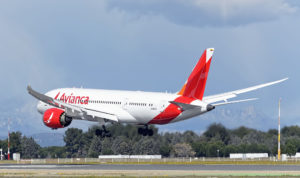
Boeing 787’s wings are incredibly strong
Why a plane’s wings don’t break?
When sitting by the window seat, one may notice the wing tips shaking up and down during turbulence. In aviation jargon, this is known as flexing of the wings. This may lead some nervous flyers to imagine that the bending motion may cause the wings to snap. In reality, this is not normally possible.
The plane is designed to allow the wings to bend in turbulence without affecting its structural integrity. In fact, a plane with a flexible wing has a longer lifespan than a rigid wing. Further, they have to be very strong because they have to hold the weight of the plane in the air.
The wings are constructed with very high-powered aluminum materials. Inside the wings are 2 spars metal beams that support the wing load. The spars run all the way through the wings ensuring that they cannot snap off.
It was stated that the wings spars of commercial planes today are stronger than the main body structure as they take the most stresses during a hard landing. As such, it can be said that the aircraft is attached to the wings rather than the other way round.
The Airbus A330 has a load limitation of +2.5 ‘g’ (gravity). The maximum landing weight is 187,000 kg at one ‘g’. Theoretically, the wings can withstand 2.5 times that weight on landing or 467,500 kg
On more modern planes like the Boeing 787, their wings are even more flexible due to more composite materials used. During testing, the Boeing 787 wings flexed 26 feet upward before failing.
Even with the Boeing 777, which was well before the 787 came into service, its wing structure was found to be incredibly strong as well. At the development stage, the wings were thoroughly tested to see if it could survive the strongest force that turbulence and bad handling could produce in flight.
During the test, the engineers wanted to see if the Boeing 777 could take up to 150 per cent of the strongest force that it could meet in flight before it broke up. Indeed, it did beyond their expectation! (See video below)
The only likely cause for a plane wing to snap off may probably be in very extreme turbulence. This scenario is highly unlikely as no captains will fly into such extreme weather conditions. With their weather radars, they could easily avoid them.
The other possible way for an airplane wing to snap off would be due to poor maintenance. Again, this is extremely rare as each aircraft undergoes rigorous testing to ensure that planes don’t fly with even the smallest, most invisible of cracks.
To date, there are no reported cases of wings being snapped by extreme turbulence except for the BOAC (British Overseas Airways Corporation) Boeing 707 crash which occurred on 5 March 1966 near Mount Fuji in Japan.
The investigation found that the forward body section and the outer right wing of the plane broke off shortly before impact with the ground. That was 56 years ago.
See a video on Boeing 777 Wing Test here
See another video on Airbus A350 Ultimate Load Wing Stress Test here